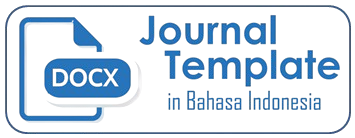PROFIL KONSEP DIRI NEGATIF PADA PESERTA DIDIK BROKEN HOME KELAS XI DI SMAN RANCAKALONG
DOI:
https://doi.org/10.22460/fokus.v4i2.6239Keywords:
Negative Self-Concept, Broken Home, StudentsAbstract
This study aims to describe the negative self-concept of students who have experienced a broken home. Broken home families have the opportunity to make children have a negative self-concept. This is because in a broken home there is a conflict so that the family is not harmonious. This research was conducted using qualitative research. The data collected in this study are data obtained by means of interviews, observation and documentation study. There were 3 subjects in this study, namely HS, DK and AA. The results showed that students who have a broken home family background have a negative self-concept. They have low self-esteem so that behaviors that appear are inappropriate / deviant behavior such as frequent truancy, smoking in the school environment, violating school rules, always being late at school, disobeying the teacher, not doing tasks that are wrong. given. Thus social interactions and social relationships are disrupted and result in obstruction of efforts to develop themselves. In addition, there are also feelings of inferiority, low self-esteem, feeling unnoticed, unlucky and different from other people.
References
Arikunto Suharsimi. (2019). Prosedur Penelitian Suatu Pendekatan Praktik. Jakarta: PT. Rieneka Cipta.
Calhoun, F & Acocella, J. (1995). Psikologi Tentang Penyesuaian dan Hubungan Kemanusiaan (edisi ketiga). Semarang: IKIP Semarang.
Rakhmat, Jalaluddin. (2011). Psikologi Komunikasi. Bandung: Remaja Rosdakarya.
Rachmaatillah, T.& Fatimah , S. (2018). PENGARUH BIMBINGAN PRIBADI-SOSIAL TERHADAP PENINGKATAN SIKAP PERCAYA DIRI . Fokus (Kajian Bimbingan & konseling dalam Pendidikan ), 1(1), 20-26
Sugiyono. (2014) Metode Penelitian Kuantitatif, Kualitatif, dan R & D. Bandung: CV. Alfabeta.
Downloads
Published
Issue
Section
License
Copyright (c) 2021 FOKUS (Kajian Bimbingan & Konseling dalam Pendidikan)

This work is licensed under a Creative Commons Attribution-ShareAlike 4.0 International License.













